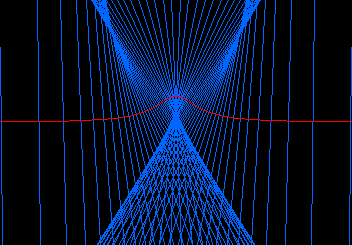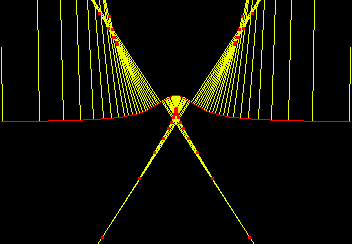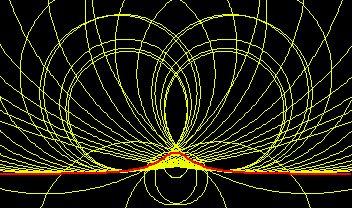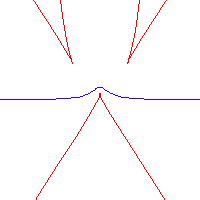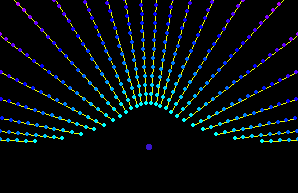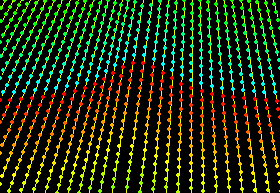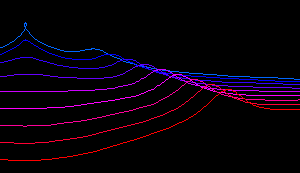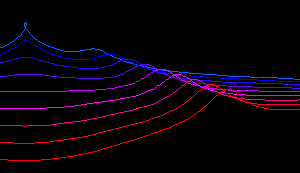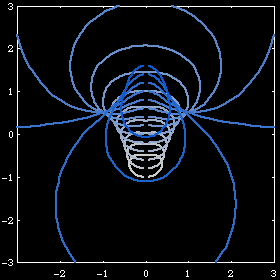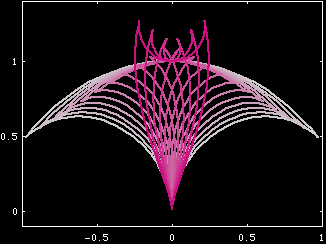Witch of Agnesi
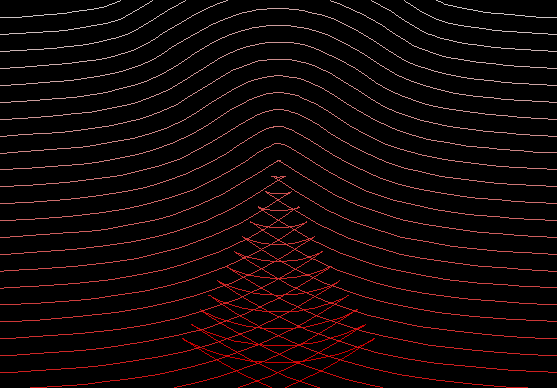
History
- Studied by Maria Gaetana Agnesi (1718 to 1799) in 1748.
- Also studied by Fermat (1666), and Guido Grandi (1703).
- The name of this curve has a colorful history.
- Versaria is the name given by Grandi, meaning “turning in every direction”.
- In the course of time the word versaria took on another meaning.
- The Latin words adversaria, and by aphaeresis, versaria, signify a female that is contrary to God.
- Thus gradually the curve versaria is understood in English as the Witch.
Description
Witch of Agnesi (Versiera) is defined as follows.
Step by step description:
- Let there be a circle of radius a with center at {0,a}.
- Let there be a horizontal line L passing through {0,2 a}.
- Draw a line passing the Origin and any point M on the circle. Let the intersection of this secant and line L be N.
- Witch of Agnesi is the locus of intersections of a horizontal line passing through M and a vertical line passing through N.

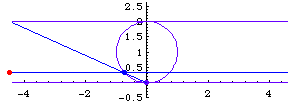
Formula
Let the construction circle be centered at {0,1} with radius 1, then:
- Parametric: {2*t, 2/(1+t^2)}, 0 < t < ∞.
- Parametric: 2 {Tan[t], Cos[t]^2}, -Pi/2 < t < Pi/2.
- Cartesian: y*(x^2+4)==8
The parametric equation {2*t, 2/(1+t^2)} is derived easily by starting with a equation of circle x^2+(y-1)^2==1 and a line y==t*x and solve the equation of circle and lines, and simplify the result by the replacement t→1/t. (or, start with y==1/t*x instead). Elimating t and we find the Cartesian equation.
Properties
Graphics Gallery
Normals, and Evolute of witch of Agnesi.
